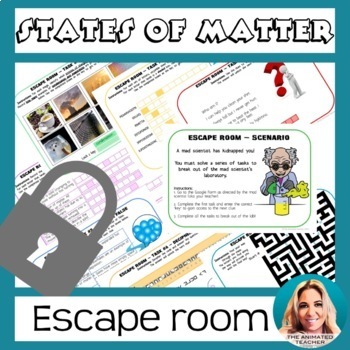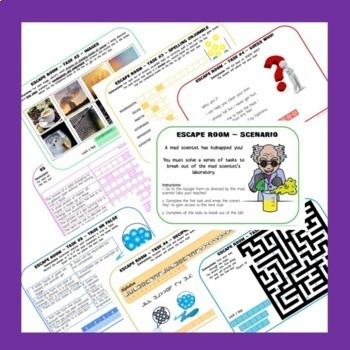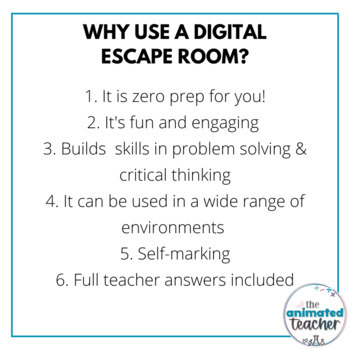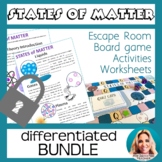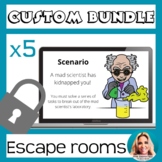States of Matter Science Digital Escape Room Activity Middle School
- Zip
Also included in
- Wanting to engage your students in learning states of matter in science? This bundle has the perfect balance of activities to increase engagement and collaboration in your class! Just print-and-go! This bundle is suitable for middle school science learning of solids, liquids and gases, changes of sPrice $14.99Original Price $18.96Save $3.97
- Want a fun, no-prep way to consolidate and review middle school science? This is it! Engaging digital escape rooms suitable for years 6, 7 and 8. No preparation is required!!!!! This custom bundle includes 5 of my best selling middle school science digital escape rooms with 20% OFF! What is includedPrice $19.96Original Price $24.95Save $4.99
- There are a lot of key terms and processes to cover in year 7 science that are important for students to understand in order to grasp the concepts. Sometimes it can feel like hard work to engage students in reviewing key terms and consolidating their understanding. This year 7 science digital escapePrice $24.99Original Price $29.94Save $4.95
Description
Want a fun, no prep activity to consolidate and review states of matter? This is it! An engaging states of matter science digital escape room suitable for years 6, 7 and 8. No preparation required!!!!!
Why use a digital escape room?
1. It is zero prep! Just share the link with students and away they go!
2. It is a fun and engaging way for students to review content.
3. It builds student skills in problem solving, critical thinking and collaboration.
4. It can be used in a wide range of environments including in the classroom, online learning, homeschooling and distance education.
5. Full teacher answers included.
What is needed to access the digital escape room?
Students just need access to a device with internet access. While the escape room uses a Google Form, students are not required to sign in so they don't need an account to play.
What does the digital escape room consist of?
The activity contains 7 tasks related to states of matter that students must complete in order to 'escape'.
Answers are entered into a Google Form (provided). The task cards are included digitally within the Google Form, but a full A4 size printable version is also included for you.
What this science digital escape room covers:
- states of matter
- melting, freezing / solidification, sublimation, evaporation, condensation, deposition
- kinetic energy and particles
- solids, liquids, gases and mention of plasma
Check out my other science digital escape rooms here: https://www.teacherspayteachers.com/Store/The-Animated-Teacher/Category/2-Escape-Rooms-541961
Related resources:
States of Matter doodle notes: https://www.teacherspayteachers.com/Product/States-of-Matter-Changes-Doodle-Notes-with-Differentiation-Options-7049357
Check out The Animated Teacher education blog:

